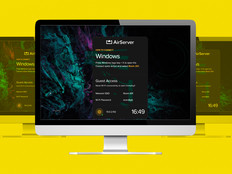Why the Customer Experience Is a Top Priority
Take, for example, the staff at the newly renovated National Air and Space Museum in Washington, D.C. (“Digital Signage Guides Travelers and Tourists to the Right Location”). When the physical building needed repair, museum officials decided that it was also a perfect time to upgrade the visitor experience.
The 2022 edition of one of the world’s most popular museums features digital signage that explains the historic airplanes hanging overhead, that enhances the experience of staring at the actual Apollo 11 command module — and even directs you to the cafeteria.
Underneath the visitor-centric tech, however, is also centralized technology that controls the messages and imagery displayed on the signs and that alerts the IT staff quickly when the tech visible to tourists goes wrong — making sure that downtime is minimal and the guests stay happy.
EXPLORE: How USPS uses edge AI apps to help track down missing packages.
At the U.S. Postal Service, employees are now using handheld devices connected to the agency’s internal tracking system, enabling the USPS to give customers nearly real-time information on a package’s location. “Integrated Solutions Allow Agencies to Quickly Add Technology” explains how mail carriers easily adapted to the new devices, which were essentially commercial off-the-shelf products.
Some technological tools work on a more academic level. “FITARA Scorecards Spur Agencies to Faster, More Efficient IT Modernization” tells the story of how the FITARA scorecard, which ranks agencies on how well they’re doing on modernization, provided the shock to the system needed to speed up the progress towards that goal. Nobody likes to see an F on their report card, at any age.
Government workers these days may need a tad more than $6 million to upgrade their technology, but they’re still finding tools that enable them to provide faster, better and more resilient services to the American public.











